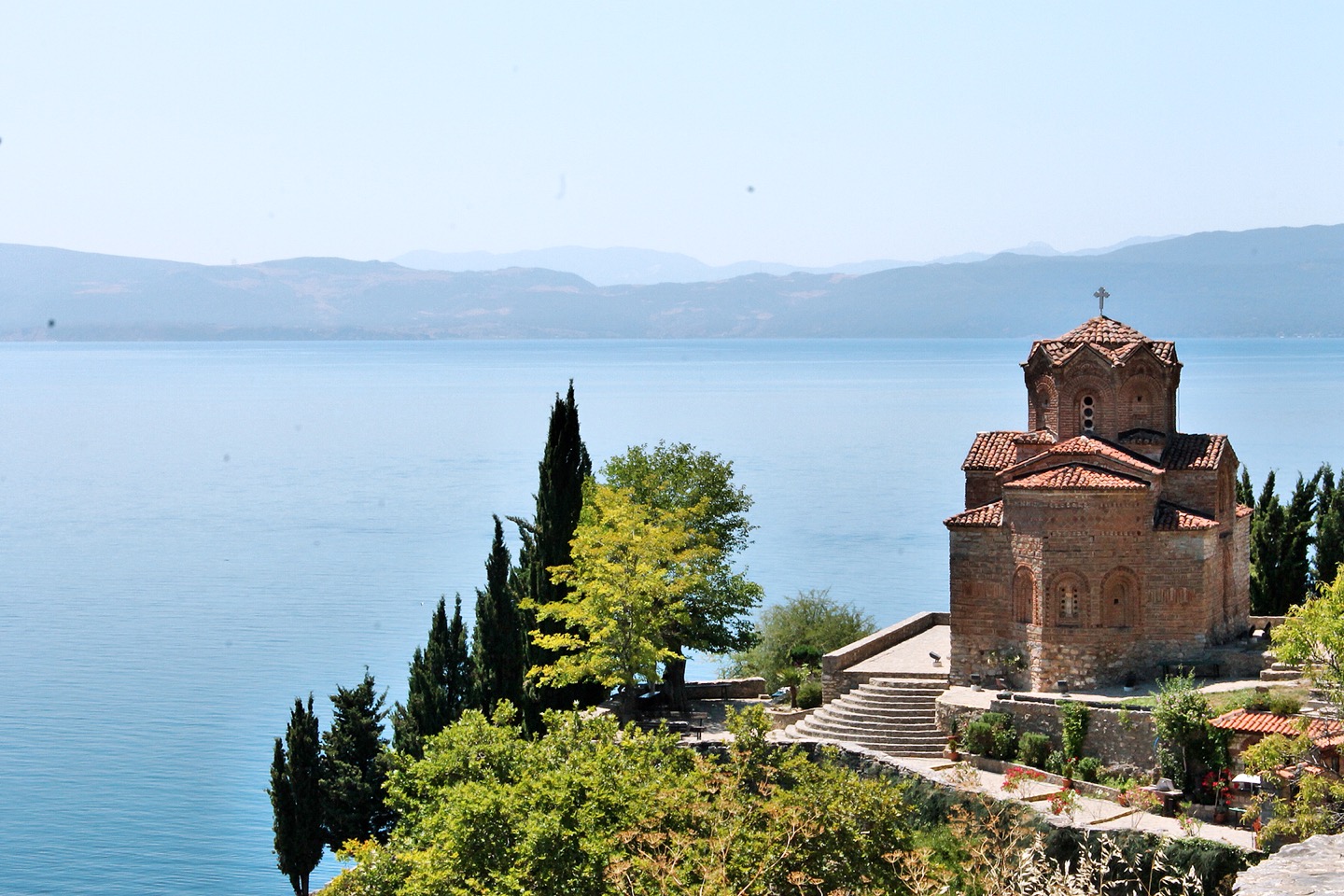Macedonia is a land-locked country, but suffers nothing for lack of a beach. Ohrid, which is settled alongside one of the deepest and oldest lakes in Europe, has all the magnetism of a coastal city.
The cobblestoned Old Town is built into the hillside and wherever you wander, you will stumble across traces of ancient history. It is no surprises then, that it is a World Heritage listed site. It is said that Ohrid once had 365 churches, one of for every day of the year and many still remain for you to visit. Standing on a cliff overlooking the lake, St Jovan’s at Kaneo, is the most iconic vision of Ohrid. But deserving of just as much attention is St Sofija, whose Byzantine frescoes could easily steal the limelight. Just below the imposing fortress, lies St Clements church and Plaosnik. The site was only recently excavated to reveal mosaic floorings from the 4th century depicting woodland creatures, flora and geometric patterns. There is still so much to be discovered under the surface in Macedonia – only ten years ago a hoard of old Venetian coins were found here, linking Ohrid to Italian trade.
If you are a collector of souvenirs, Ohrid offers beautiful mementos that won’t be hidden from sight after your tan fades. Filigree is traditional craft in which ultra thin silver wires are intertwined with precision into a delicate decorative form such as a butterfly. But the lake is famed for its pearls, which are unique due to the shiny coating made from the scales of a local fish. Only the Filevi and Talev families know the secret to their creation, passed on by a visiting Russian soldier in the 1920s.
Near the harbour you might spot a colossal figure holding a small cross triumphantly in the air. The monument is symbolic of an annual tradition occurring every January 19th since the Byzantine times. On this Winter’s day, brave men jump into the icy cold water to recover a crucifix thrown into the depths by a priest. The one who finds it is said to be blessed with good fortune that year, but every swimmer is to be rewarded with a stomach warming rakija (a popular spirit with locals).
But if you are here in Summer, you won’t be able to resist the lure of the translucent water and there are many spots for a dip in Ohrid. From St Sofija make your way down towards the water. This is an adventure in itself, you will squeeze through a narrow corridor against the cliff face, tread across a wooden boardwalk over the lake and cross several rock covered ‘beaches’ and beach bars until you reach Kaneo Beach. This is the place to be. South of the city lies my favourite place for a swim, Gradiste Beach. Choosing your spot is half the fun, with 5 small shores connected by rickety boardwalks that edge around the dividing cliffs. Each has beach bars and deck chairs with the vibe set by the music of choice. The water here is the cleanest I have ever seen and completely flat. For someone who has grown up with Aussie beaches, the completely flat water is both strange and totally calming. You will not get dumped underwater by a surprise wave here.
Spare a day to travel by boat to Sveti Naum, where the freshwater springs of Crn Drim flow into the lake. If you stand at the source, you can feel the rush of the water (it flows at 10 litres per second) and the temperature is noticeably cooler. The monastery here is a quiet refuge, with peacocks strutting the surrounding gardens. Inside is the tomb of Sveti Naum himself and it’s said that you can hear his muffled heartbeat if you put your ear to it. You truly can hear something, but in all likelihood, it’s water dripping deep underground.
Afterwards, stop by Ostrovo for a traditional lunch accompanied by a string quartet. The setting of this rustic restaurant is an experience in itself, with wooden platforms floating on the lagoon. Try the gjomleze, a traditional dish comprised of finely pressed layers of flour and water. It is baked under an iron pan giving it a crisp outer and a smokey flavour.
Ohrid is lively in the evenings and the food lover will find plenty of outdoor dining options. Dalga was my personal favourite, with a wide terrace overlooking the lake and delicious food. The restaurant is known for their fish dishes, but make sure to order a serve of makalo, a mouth-watering garlic dip that you won’t want to share with the table. Bilijanini Izvori is set next to a spring, which features in a well-known Macedonian folk song ‘Biljana platno belese’. And if the food alone doesn’t win you over, the live music and folk dancing will.
























